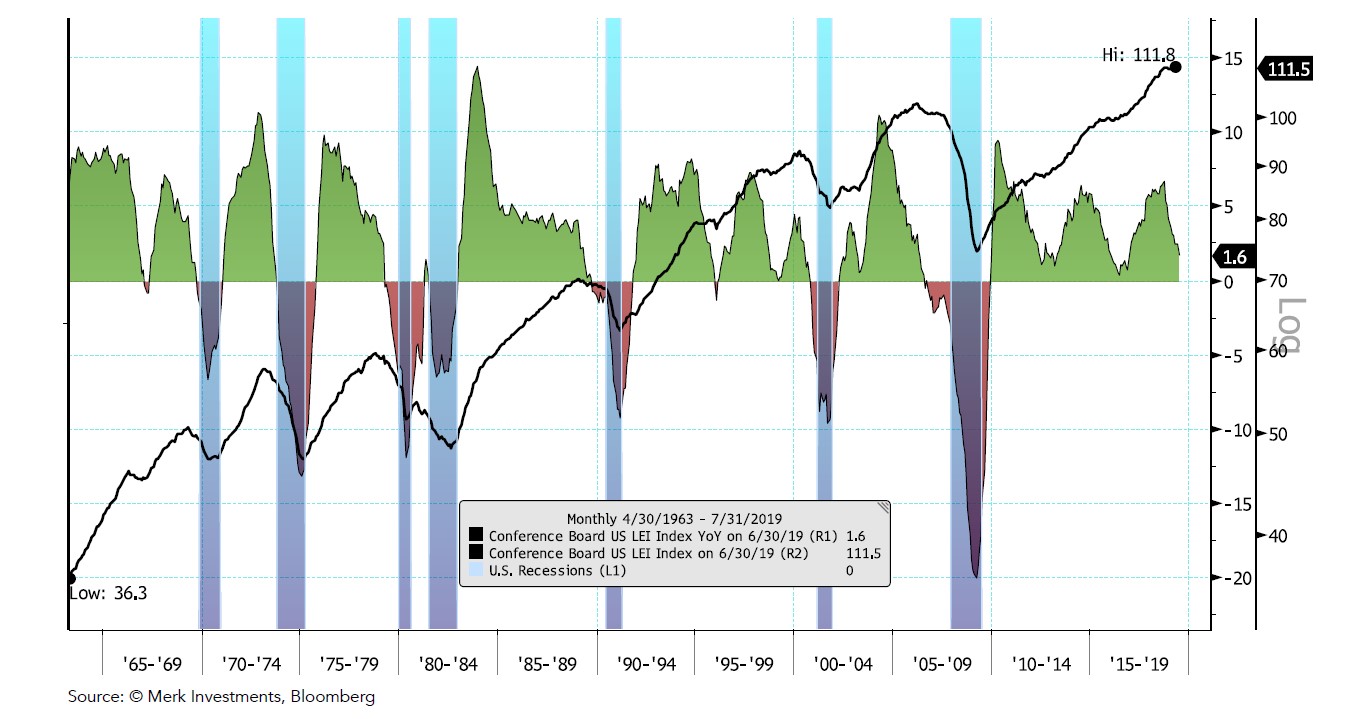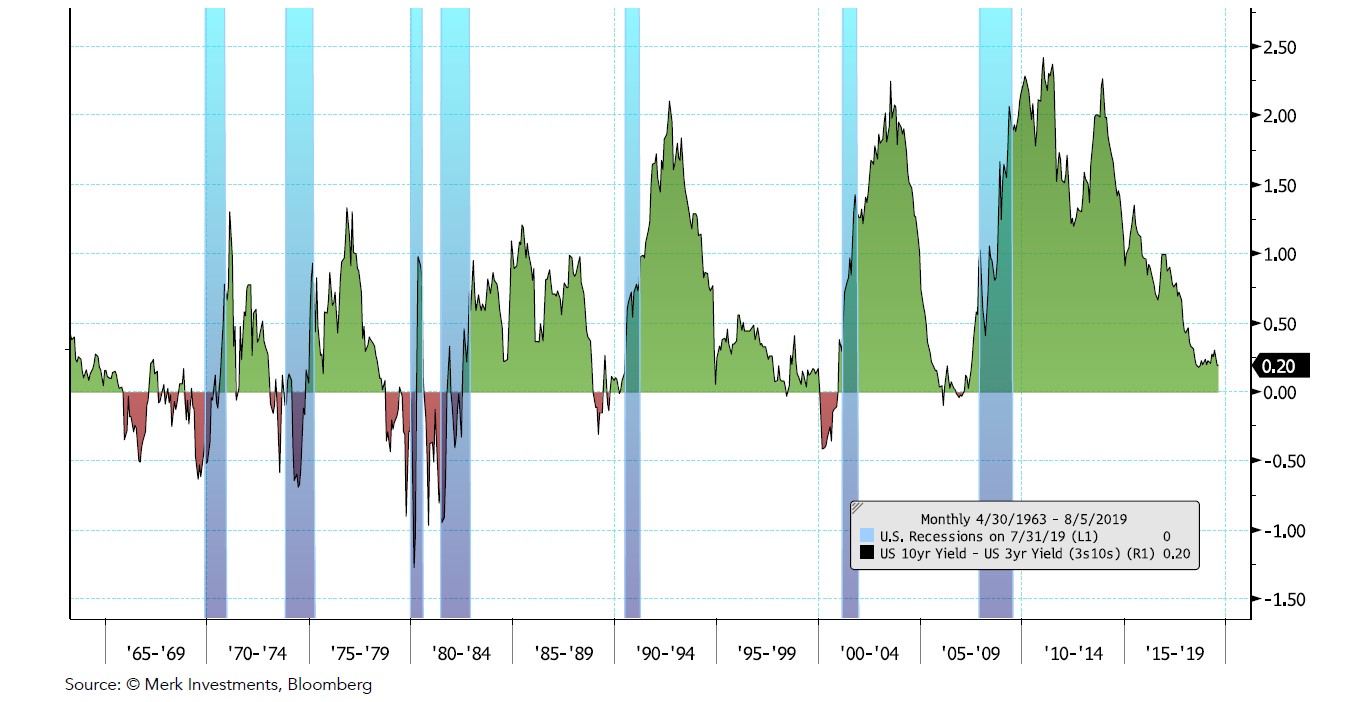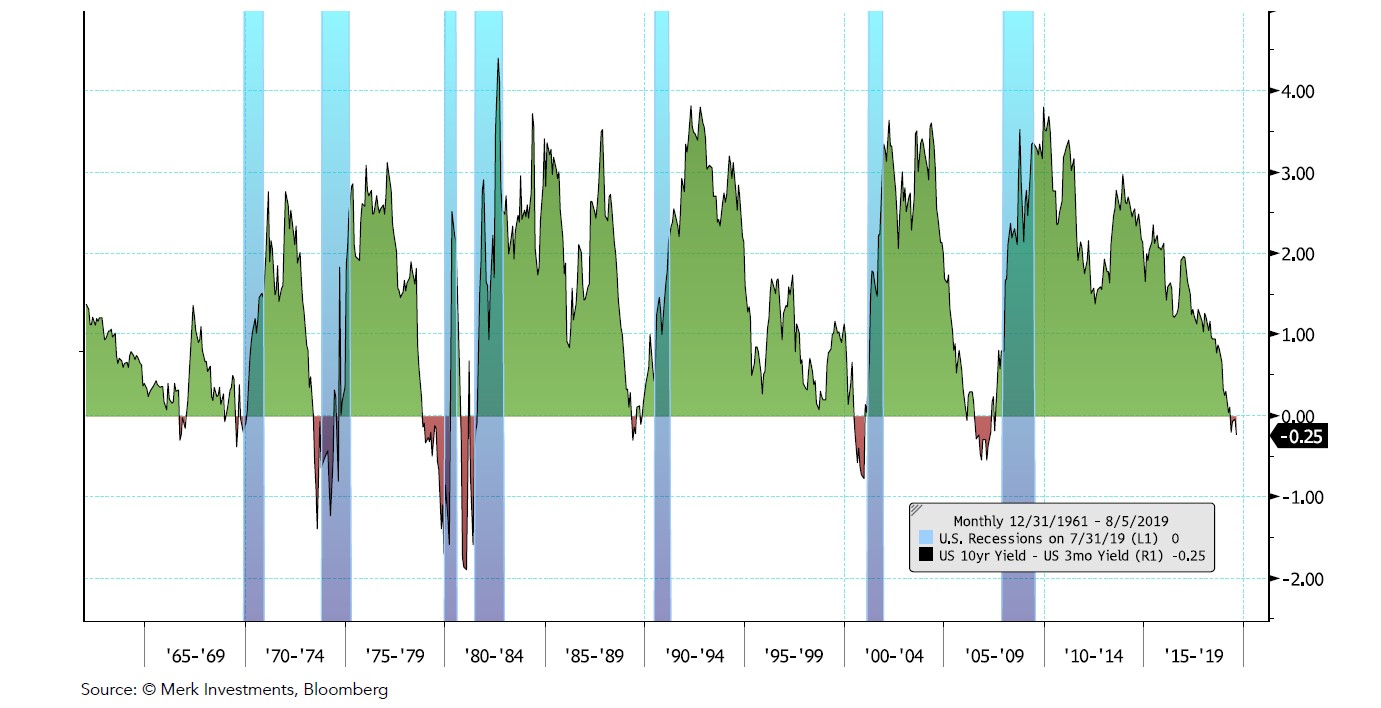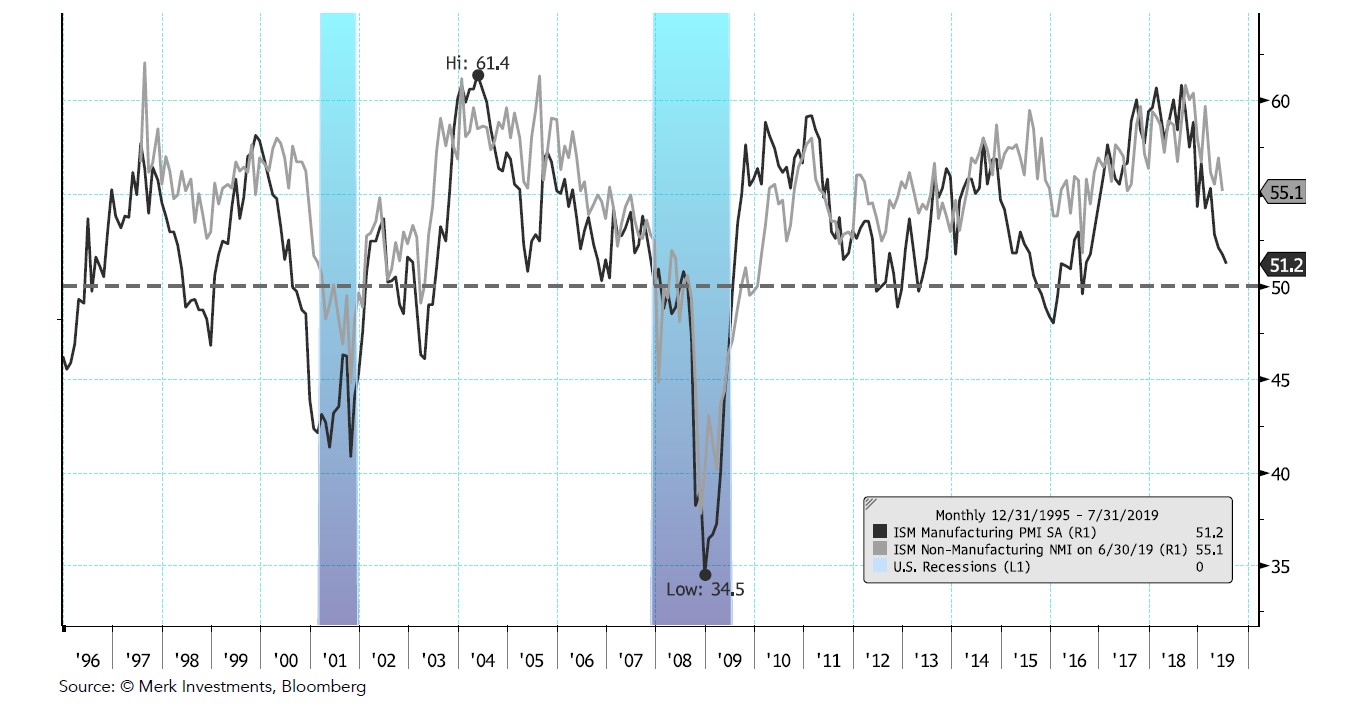As part of Merk’s in-house research we regularly evaluate a consistent set of charts covering the economy, equities, fixed income, commodities and currencies. The aim is to keep our eyes open and to look through the noise of the headlines, avoiding the distractions of sensationalized click-bait. In sharing this content, we offer a cross-check to your own thinking and aim to add value to your own process.
Q2 hedge fund letters, conference, scoops etc
Today’s topic: The U.S. Business Cycle
Is the Economic Expansion Over?
U.S. Business Cycle Report
August 2019
Nick Reece, CFA – Senior Analyst & Portfolio Manager, Merk Investments LLC
Why is the Business Cycle Important?
S&P 500 (log scale) and official National Bureau of Economic Research (NBER) U.S. Recessions
Analysis: Over the 90 years between 1927 and 2017, the average S&P 500 monthly return during expansions was +0.89% (889 months), compared to an average S&P 500 monthly return during recessions of -0.71% (191 months). In terms of proportions of time: expansion months account for about 80% and recession months about 20%. The business cycle also has important implications for Fed policy. *Note that recessions are not announced by the NBER until well after their start dates*
U.S. Leading Economic Indicators (LEIs) Index
Conference Board’s LEI Index and YoY Rate of Change
Analysis: Since last month’s report the LEI YoY rate of change decreased: from +2.5% to +1.6%. Over the past several months momentum has slowed, but given that the YoY rate of change remains positive, history suggests a recession is unlikely to start within the next six months. However, the index level is below its prior cycle highs. This picture keeps me generally positive on the outlook for the U.S. economy. Chart Framework: I’d get incrementally negative on the business cycle outlook if the LEI YoY went negative.
U.S. Yield Curve Steepness
(10yr yield – 3yr yield)
Analysis: The 10yr-3yr yield curve is still positively sloped, meaning the 10yr yield is higher than the 3yr yield. The yield curve steepness is slightly flatter since last month’s report, and the bigger picture flattening trend appears to continue. The 10yr-3yr curve may invert in the coming quarters. Chart Framework: I’d get incrementally negative on the medium term business cycle outlook if the yield curve inverted (i.e., 3yr yield > 10yr yield).
U.S. Yield Curve Steepness
(10yr yield – 3mo yield)
Analysis: A cross reference to the 10yr-3m yield curve shows a more concerning picture, inverted at -25bps. As with the 10yr-3yr, 10yr-3m inversion has been a strong recession warning signal— however, it is worth noting that the 10yr-3yr (shown on the previous page) has always inverted prior to recessions and still has not (yet) inverted.
U.S. PMIs
Manufacturing and Non-manufacturing (aka Services) PMIs (Purchasing Managers Index)
Analysis: Manufacturing PMI ticked down over the past month, from 51.7 to 51.2, but is still generally at a level consistent with a growing economy. Chart Framework: I’d get incrementally negative on the business cycle outlook if the manufacturing PMI fell below 50.
We invite you to download a copy of the chart book (PDF).
When you become a premium subscriber, the remainder of the month is free with full access to all premium reports that also include select premium chart books and other benefits; then, the price is only $10 a month.You can cancel any time.
Please also view our premium charts:
The investing audience should view this content in the context of their individual investment process, time-horizon, and goals.
Article by Axel Merk, Merk Investments






